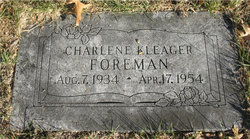The good news is that the church records of the Catholic Church of Kaltbrunn (Katholische Kirche Klatbrunn, Sankt Gallen) are on microfilm at the Family History Library near where I live, in Salt Lake City, Utah. That means I don't have to go to Switzerland (though I still want to some day) to look at them.
The bad news is that these microfilms are a pain to work with. The only way to read them is on a microfilm reader. To do so the film has to be rolled one page at a time between the reel and the take-up reel below a light that projects the image of one page on a tabletop screen in a darkened room.
It is hunt and peck to find the name Kleger. When the name is found, then the old German script has to be deciphered, and I really struggle with that. Also, there are many Klegers (also spelled Kläger even on the same record) in Kaltbrunn and it takes some detective work to figure out how each are related.
Bless the priests that had nice handwriting and knew how to dip their pens in the ink so as not to get ink blots. One can tell by looking at the records that the same priest was the scribe for many years. Then wham, the handwriting changes. Darn the priests who had sloppy handwriting with blotches and spots!
It is possible to get an image of the microfilm page at the library, but that involves taking the film off of the reader on two reels, taking it to a microfilm scanner, threading the film between the two reels onto the scanner, finding the image, enlarging it on the attached computer, and taking the image.
It will take a while, and several trips to the Family History Library to start to put together the different families! On this film there are baptism, confirmation, marriage and burial records.
Following is a page I scanned from the end of one of the two microfilm rolls (#949823). This is a unique record, called "Familienbucher, 1846". It is a "family book", kind of like a census taken in 1846 of families in the parish. There are only 2 years of these census; 1846 and 1866.
It seems the person recorded (with the exception of parents) had to be alive at the time of the census, as not all of the children I know of are listed here. However, there are death dates listed that are much past 1846, so apparently the priest went back at the time of the death and entered the death date.
This is the record of Peter Paul Kleger as head of household in 1846.
It says, from top to bottom:
Parents: Kläger, Johann George and Theresa Stoop
Head of Household: Kleger, Peter Paul, day laborer, born 1785 June 29, died 1849 January 31
Spouse: Maria Barbara Fäh
Children:
Joseph Mang, born 1816 January 23
Catharina Aloisia, born 1818 October 16, died 1859 April 19
Catharina Barbara, born 1821 Dec. 14, died 1851 April 22
Johannes Vincentius, born 1823 October 20, died 1881 Nov 18
You read those names with ease, right?
Fortunately, the Peter Paul is easy. I had to have help with his mother's name, it looks like "Yerefia Nooz" to me. In fact, the experts I consulted at the help desk disagreed - not on Theresa, but on the surname - and "Stoop" seems to be the consensus.
I don't think I would have ever concluded "Vincentius" for the second name of the last child listed! Old German script is very different from what we are used to reading!
The oldest child is Joseph Mangus Kleger, who is my great great grandfather. So Peter Paul Kleger and Maria Barbara Fah are my great great great grandparents, with Johann George Kläger and Theresa Stoop being my great times 4 grandparents.
Very faintly, on the far right side of this page (I didn't get that part on this image), it says next to Joseph Mangus' and Johannes Vincentius' a penciled-in word: "Amerika". We know Joseph immigrated, to St. Louis in 1846. But apparently a brother of his also immigrated. He is not listed on the same passenger list as Joseph, and I have not run across a Johan or John or Vincent Kleger in my Franklin County, Missouri research.
So a brother of Joseph's immigrated too!! I would like to find out more about where he went and what happened to him. I also wonder - what name did he go by in "Amerika"?







